With the help of content management systems, CMS for short, simple and fast websites can be created - often without previous knowledge. Webflow, Wordpress and Co. are therefore becoming increasingly interesting not only for companies. In this article, the classic CMS are analyzed and compared with each other so that you can make the best choice for your project with our comparison winner or a suitable Webflow alternative. An overview of various Webflow alternatives in this CMS comparison.
What are content management systems?
Content management systems help users create a website without in-depth know-how, fill it with texts or other media, and manage it. Classic CMS are available from various providers who specialize in different purposes. The appropriate system should therefore be selected in view of the success desired by a company.
The leaders in Germany are Webflow, WordPress and TYPO3. TYPO3 scores points with the best loading time - almost half of all pages (44.82%) load quickly and only 12.82% load slowly. Webflow also has access to the world's fastest servers, which ensures an optimized loading speed. WordPress sites, on the other hand, load 26.15% slowly and just 23.75% fast. In return, WordPress has 28,184,000 installations; Webflow has over 2,000,000 installations. With 315,000 installations, TYPO3 lags far behind.
.avif)
Webflow
Webflow allows its users to create and host websites and combines the advantages of CMS, a website builder and independent programming.

With the help of the online editor, all elements of a website can be combined and put together visually and freely as desired. This automatically generates the appropriate code that would otherwise have been used to program the website. Webflow users can therefore implement and visualize their ideas directly without having to deal with the often complicated programming. This is why this software is currently the most versatile and strongest CMS available, which allows even laymen to create a website in the blink of an eye.
Webflow has the big advantage over other systems that it uses the AWS servers from online giant Amazon. These are among the most reliable servers in the world, which protects Webflow from hacker attacks and failures. In addition, this CMS is a closed system, which makes attacks significantly more difficult. In contrast, other CMS such as WordPress must first be extensively protected.
Webflow is optimized for search engines (SEO), which makes appropriate extensions unnecessary. In addition, users can create their websites responsively so that the design is automatically adapted to all common devices such as laptops, desktops, smartphones or tablets.
Anyone who wants to create a website with the help of a Webflow alternative usually uses provided Templates (templates), which then also limit the visual design options. This is different with Webflow itself, which works without templates and sets no limits for the web designer in implementing his imagination. In addition, the CMS can also be used as an online shop, which can also be individually designed down to the last detail.
Wordpress
WordPress is the most widely used Webflow alternative among CMS. Originally, it was used as a blog system. Thanks to continuous development, it can now also support other content, such as media galleries, classic company presentations, seminar portals, member websites and learning management systems. With the support of WooCommerce, WordPress can also be used as an online shop.
The CMS scores points with flexible customization options, a large selection of templates and (for the most part) free plugins. With this offer, WordPress is able to publish over 81 million blog posts from users - and that alone in November 2020, making WordPress the largest CMS market share internationally and is the most used Webflow alternative.
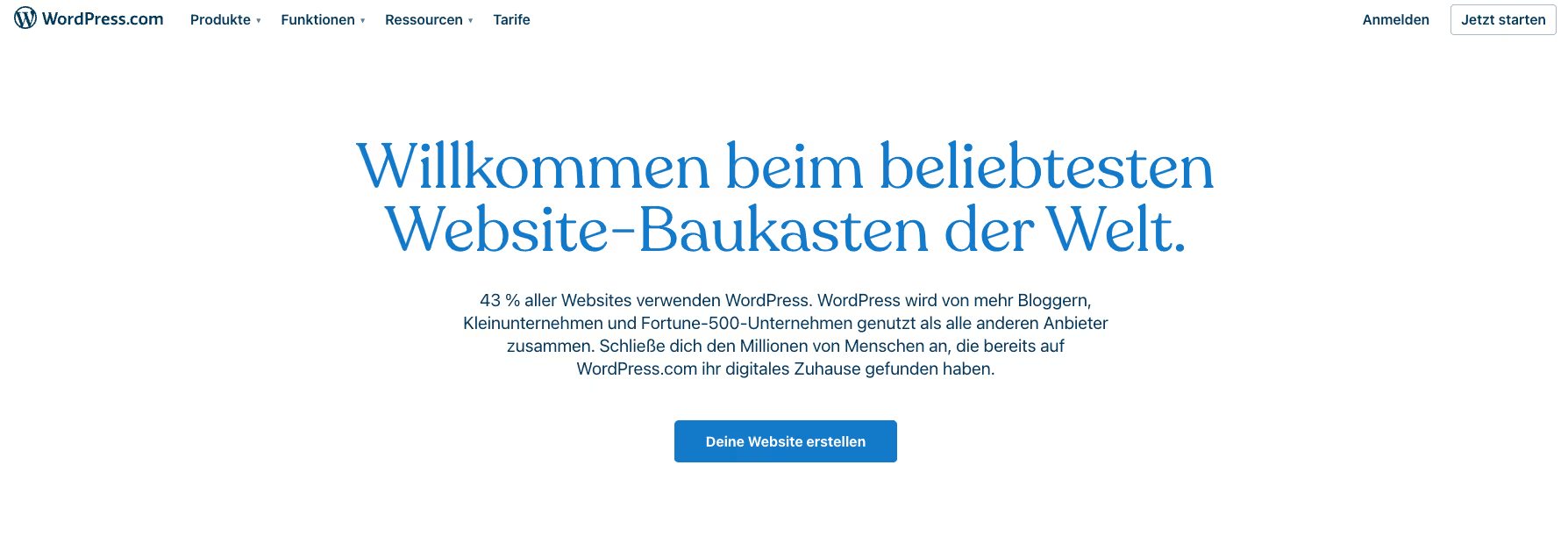
However, this widespread use makes the system a popular attack target, which is why security updates must be installed immediately. Since it is not a closed system, it is more difficult to set up adequate protection than with Webflow, for example. On the other hand, WordPress's good scalability and the at least limited ability to map business processes with individual software or plugins are remarkable. Finally, this Webflow alternative paves the way for internationalization, although the details here have weak points.
Ghost
Similar to Wordpress, it is also Ghost Another open source CMS for bloggers. Launched in 2013, the software has made a name for itself, especially among bloggers. Ghost is particularly popular with everyone who values a sleek and beautiful design and uncompromising performance. Because the biggest difference to WordPress is that Ghost doesn't have any plugins! External content can be loaded per article or globally using code injections. This keeps the code slim and improves the loading speeds.
The Ghost Editor is nice and very reminiscent of Medium. With the help of so-called cards, for example, content such as images, callouts (highlighted texts), buttons, products (for example for affiliate products) can be added to the text very quickly. But it's not just writing that's nicer than with WordPress. Ghost also has two special features:
- Ghost makes it easy and convenient to implement a paywall model including membership. Ghost's Stripe integration makes it possible. Content can be made available to free subscribers as well as to paying members as desired. The system is very flexible and does not charge any fees. There are only costs for payment with Stripe.
- If you want, you can also send newsletters via Ghost. Articles can be published or sent either as text, as an e-mail, or both. However, if you want that, you have to use Mailgun, the only provider that is supported so far.
Hosting is still a challenge with Ghost if you want to host it yourself. Since the hosting offered by Ghost itself increases with the number of subscribers and quickly becomes expensive, it is recommended to host Ghost yourself. However, you are still looking in vain for 1-click hosts like WordPress. There are also ways Ghost hosting in Germany to operate.
TYPO3
While WordPress is the first choice for private blogs and simple websites for many, the Webflow alternative TYPO3 shows its endurance for larger projects. The CMS scores points with a variety of enterprise features and makes internationalization or digitization of business processes child's play. At the same time, TYPO3 remains easy to use, performant and scalable.
The German Webflow alternative received criticism in the past when version 6 was released after version 4, which made an update impossible due to the big jump. As a result, users were virtually forced to completely relaunch. This significantly reduced the joy of the time-consuming improvement of technology and architecture among enterprise customers.
Today, TYPO3 is popular due to its quality and excellent performance. The system is considered extremely secure and enables good internationalization and an appealing illustration of business processes.

However, the disadvantage of this Webflow alternative is when the source code is to be adapted: Changes still have to be made by an expert, which makes it correspondingly expensive for laymen to use.
Joomla!
Joomla! is a user-friendly and easily expandable Webflow alternative, which, however, has lost its reputation due to frequent security gaps in the past. The installation figures have not yet recovered and show that the reputation of the CMS among its users has fallen sustainably.
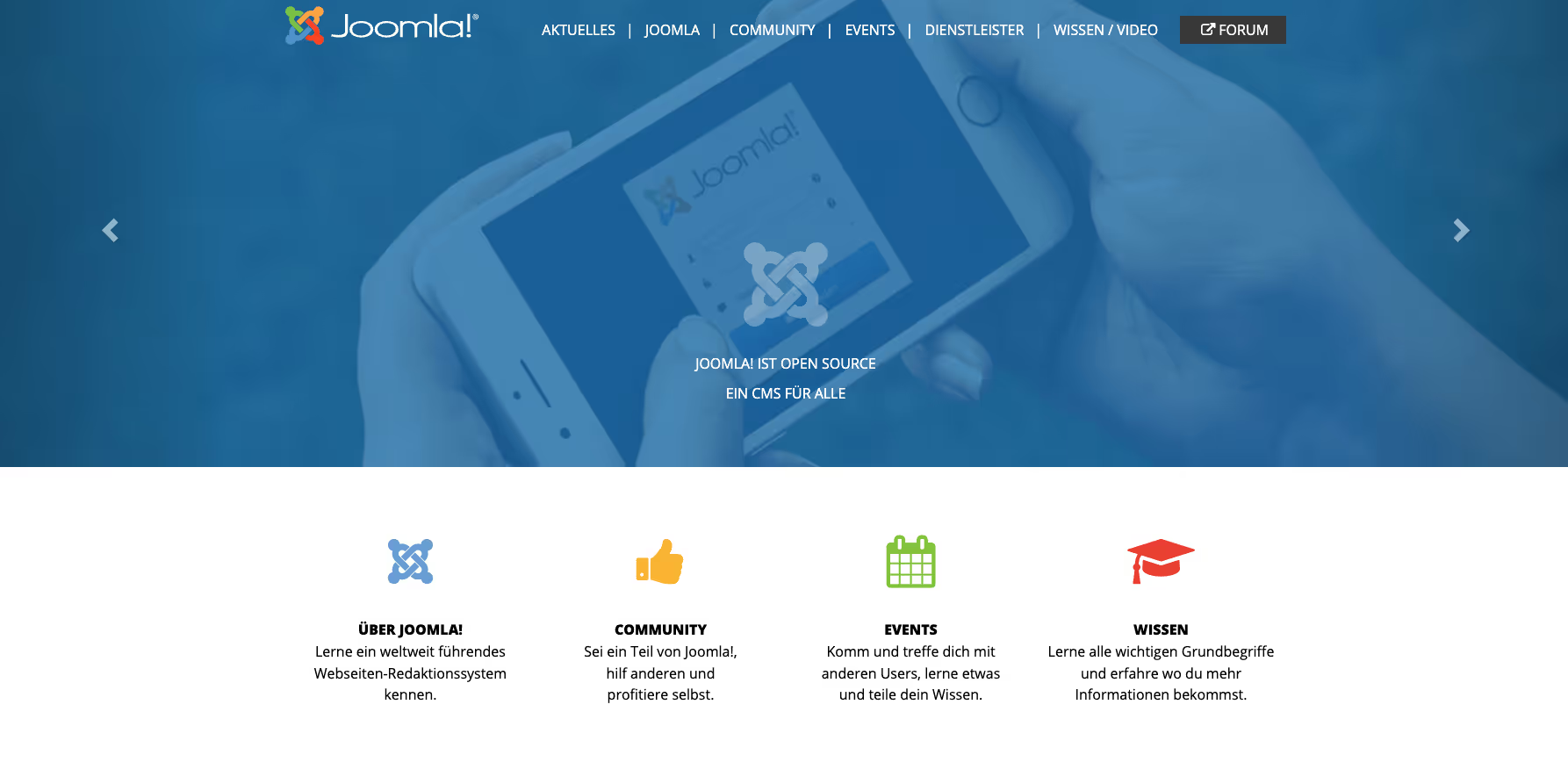
That Joomla! Now launching security updates at regular intervals, has barely persuaded medium-sized companies to place their trust in the system again. The market share of Webflow Alternative was therefore just 2.9% in 2019. Because of the long load times, Joomla! Still only partially attractive for users.
drupal
Drupal actively supports its users with a large community of developers. The Webflow alternative has been installed 600,000 times worldwide - compared with 34,000 German installations, which shows that Drupal is mainly used abroad. Companies benefit from a variety of modules that enable very different uses.

Drupal enjoyed its heyday with versions 7 and 8. They combined the CMS with an e-commerce system that was yet flexibly adaptable and scalable. However, the declining installation figures of the Webflow alternative since the current version 9 show that Drupal was unable to maintain this success. Nevertheless, users will find a proven online standard here with regular updates and decent performance. However, an expert must also be consulted here to adapt the source code.
Squarespace
Squarespace is a closed system and therefore an obvious Webflow alternative. This structure makes the CMS more secure than competitors such as WordPress, Drupal or TYPO3. At the same time, major changes can only be carried out by a Squarespace developer, which in turn comes at a corresponding cost.
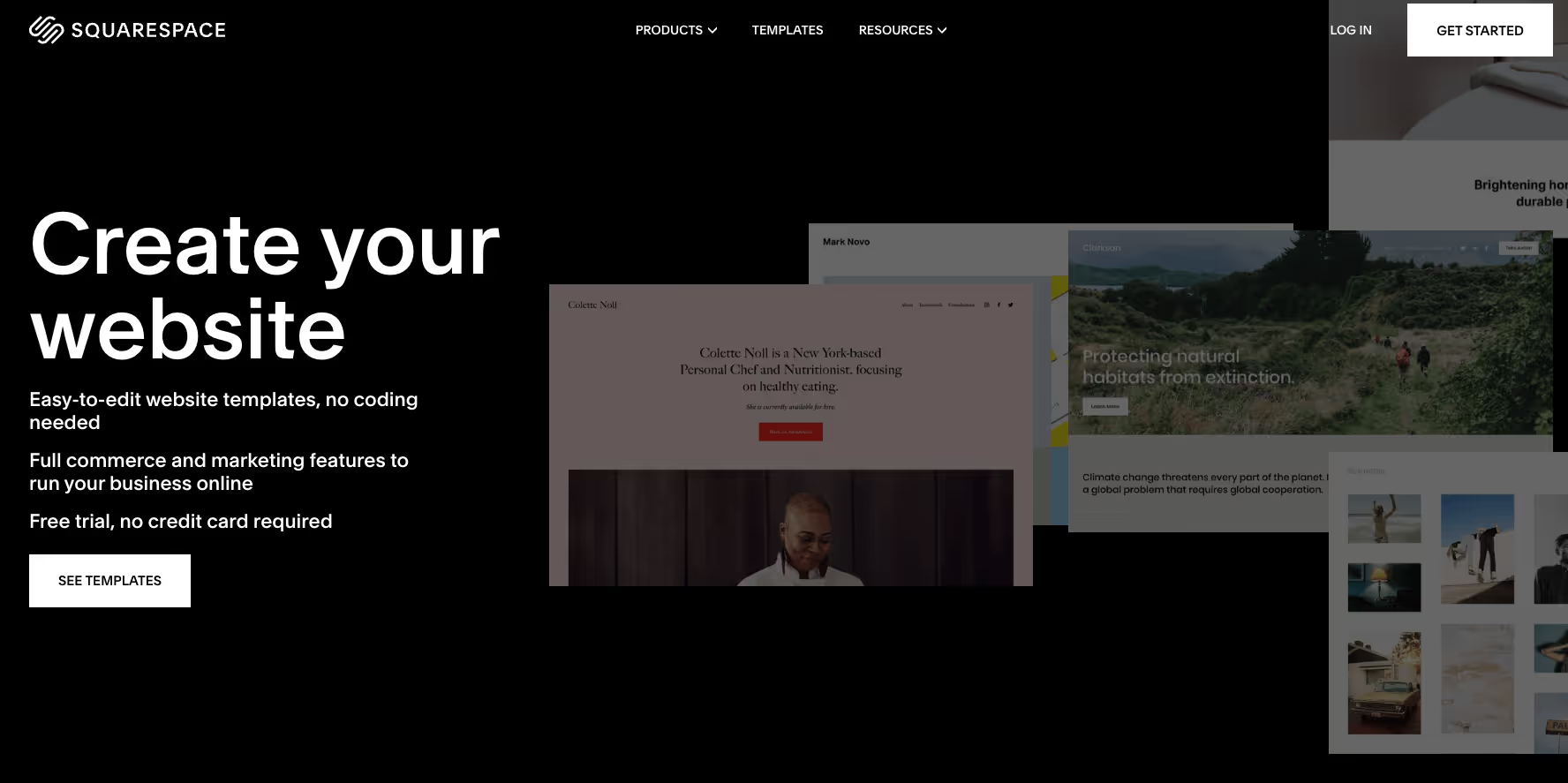
The Squarespace CMS generally does not use plugins, but uses directly integrated functions that can be activated by users of the Webflow alternative with a simple click. This eliminates annoying updates for corresponding plugins, which makes the use of Squarespace pleasantly smooth. Other CMS such as WordPress, on the other hand, sometimes require time-consuming updates for their plugins.
The Webflow alternative Squarespace charges its users a corresponding sum for ease of use, numerous functions, support, regular maintenance and other amenities. At first glance, other CMS are cheaper, but the costs for web designers and similar experts must be taken into account, which puts the price into perspective.
Squarespace eliminates these expenses, as the website can also be built without programming knowledge. This also means that time-consuming reading into technical know-how can be dispensed with. Thanks to continuous expansion, users are constantly getting new features and appealing layout templates with this Webflow alternative.
Wix
Wix is a modular system and is therefore also different from open source systems. The application is limited, which is why this Webflow alternative is only suitable for simple and undemanding websites or online shops. At the same time, this has the advantage that Wix is quite user-friendly and allows you to find your way around quickly. Images, videos and animations can be easily integrated into the Webflow Alternative, which makes artists, photographers, musicians and some small businesses stand out as the target group.

The CMS offers many attractive templates, which, however, can hardly be adapted and individualized. Significant amounts of data and a complicated backend are out of place with this Webflow alternative. Instead, Wix scores points with regular updates that bring developers many new options and features. Bugs are effectively eliminated in a short period of time. In the App Market, the limited range of Webflow Alternative offers can be supplemented with features and extensions. However, these have the disadvantage that they are created by third parties, which can lead to malfunctions and other problems.
magento
The Webflow alternative Magento uses an open-source system and the in-house page builder, which makes it much easier to create a website. This allows users to easily and intuitively integrate media, “drag'n'drop” elements with a single mouse movement and follow the changes in real time through the visual preview.
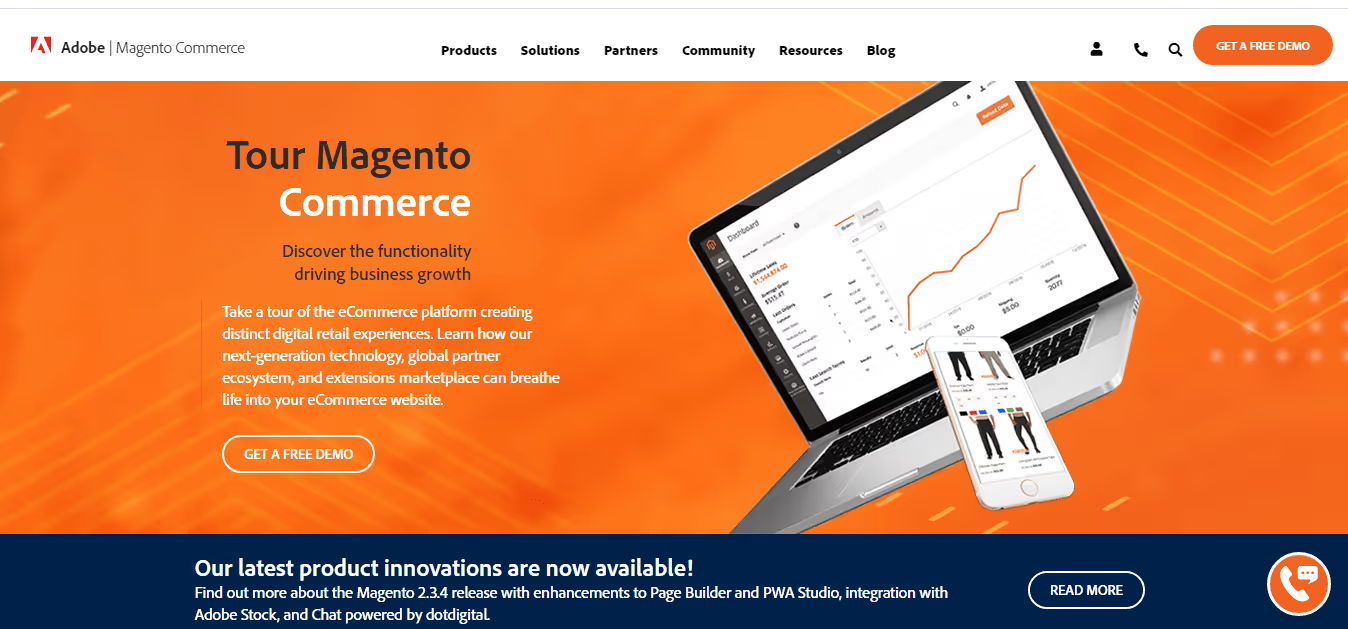
Magento is particularly well known among operators of online shops, as the professional system makes it easier to process sales and create an appealing presentation. The Webflow Alternative allows its users to plan updates in advance and create them before publication, which is interesting, for example, for a changing range of products at the change of season: In the Webflow Alternative, the products and pages can first be drafted and then published at a fixed time. The update is automatic on this date, so the user doesn't have to worry about it.
However, these features make the Webflow alternative Magento quite cost-intensive and complex. The training is difficult and lengthy and can hardly be mastered by laymen. Even after the website has been completed, it remains maintenance-intensive, which can result in further costs for an appropriate expert.
conclusion
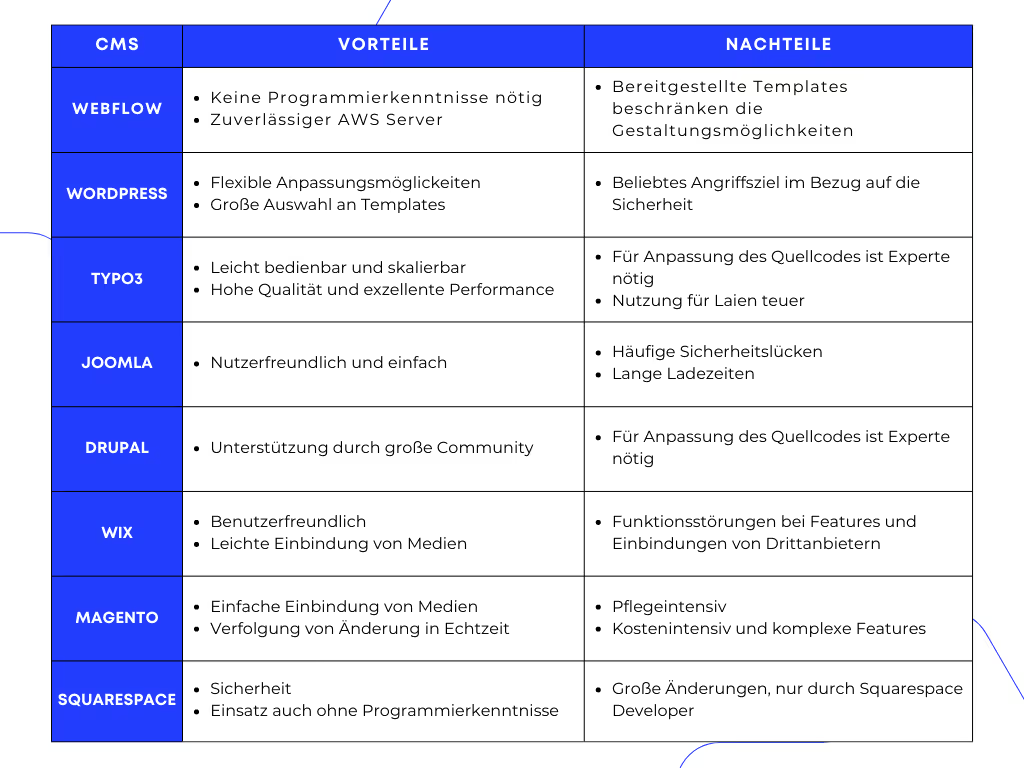
Webflow offers the best overall package of the compared CMS: Thanks to the intuitive visual design, the system makes it unnecessary to employ a developer, which can save the company several thousand euros. Regular updates to the website can also be easily carried out by the entrepreneurs themselves. In addition, there is the almost limitless free design of the website and the security of the closed system.
The Webflow alternative TYPO3 has now established itself as a standard for larger medium-sized companies as well as for public sector clients. Smaller companies, self-employed people and private individuals, on the other hand, use WordPress, which explains the widespread use of the CMS.
Joomla! And Drupal is seeing declining installation figures and was therefore unable to establish itself in Germany. Wix also only has a very limited target group due to its limited options.
Squarespace offers many services that make a developer unnecessary and easy to use. As a result, however, the costs of the Webflow alternative are also increasing. The use of Magento also entails a high cost, which only pays off for a few companies in terms of complexity and lengthy training.









Recommend this post